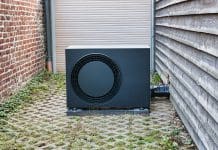Houses are at risk of overheating without air conditioning installed due to requirements set out in modern building standards
A new study has revealed overheating in homes is a growing problem because of modern building standards.
According to the research some buildings are so hot they are considered to be potentially lethal in the summer months.
In the UK it is uncommon for domestic properties to use air conditioning or comfort cooling, but there remains a focus on heat retention.
Research reveals overheating risk
Now, new research from Loughborough University’s School of Civil and Building Engineering has revealed overheating is a growing issue, particularly in new homes. This can have a significant impact on the health and wellbeing of occupants, in some cases even leading to premature mortality.
The report from Kevin J Lomas and Stephen M Porritt is set to be debated at the end of the month by built environment think tank Edge.
No provision for controlling ventilation
Building regulations currently aim to reduce heat loss in the cold weather, but ventilation is not considered to control overheating in the warm weather.
Modern building regulations have seen the average heat loss of housing stock fall by 23 per cent since 1970. Yet, more than 10 per cent of households across England were declared as being in fuel poverty in 2014, with some 43,900 deaths across England and Wales in 2014/15 due to the cold indoor temperatures.
Mortality due to overheating is far less common, with only 2,000 excess deaths in England during the 10-day 2003 European heatwave.
Edge will debate the issue of overheating in buildings on the 31 January. This meeting will be chaired by Mark Jones, of the National House Building Council. The association will examine what can be done to prevent overheating and how modern building controls should aid with this. Furthermore, the group will consider what changes should be made, if any, to the higher education curriculum and CPD.













